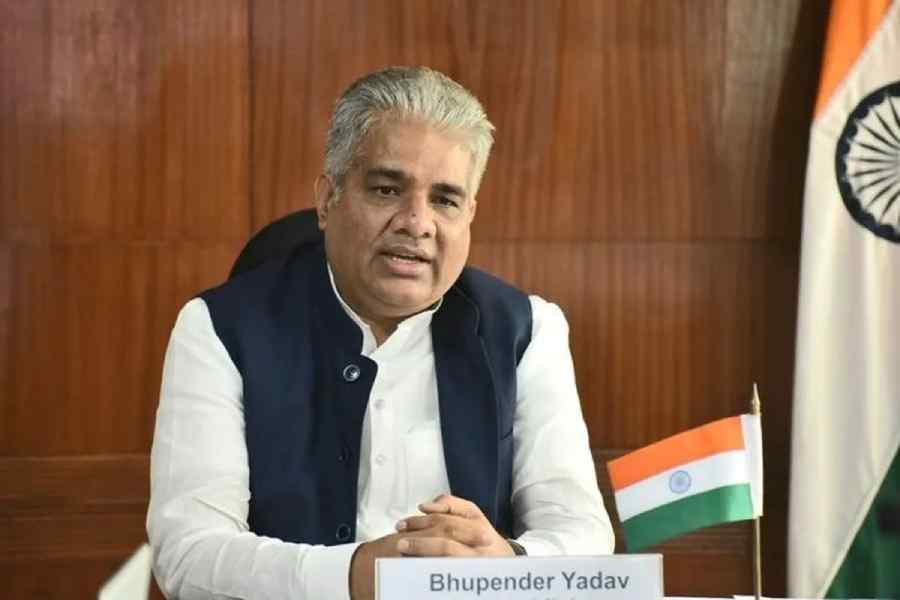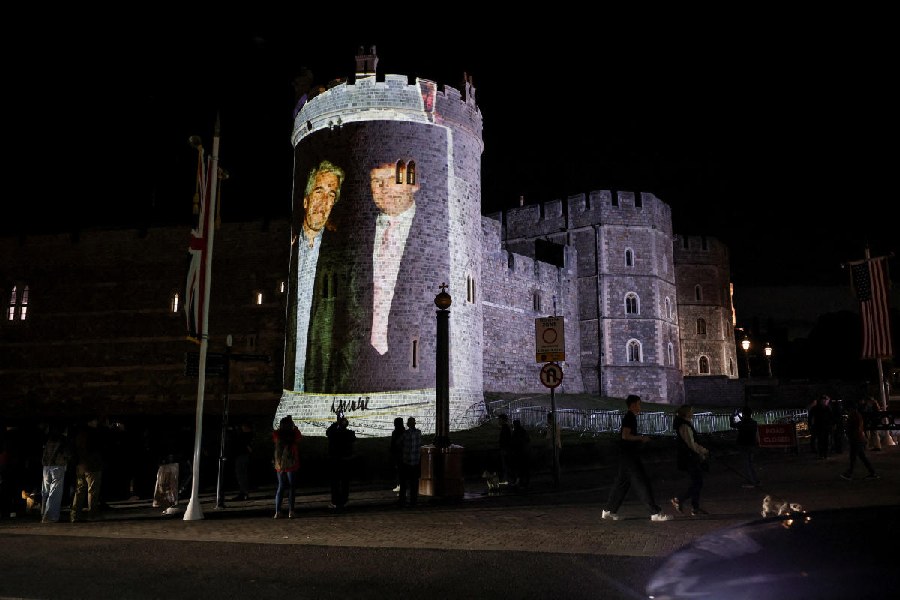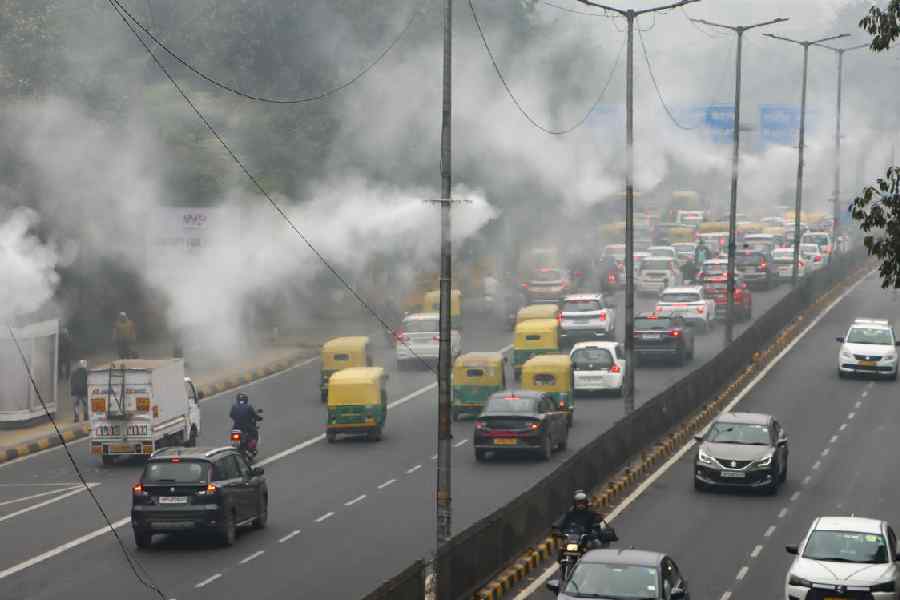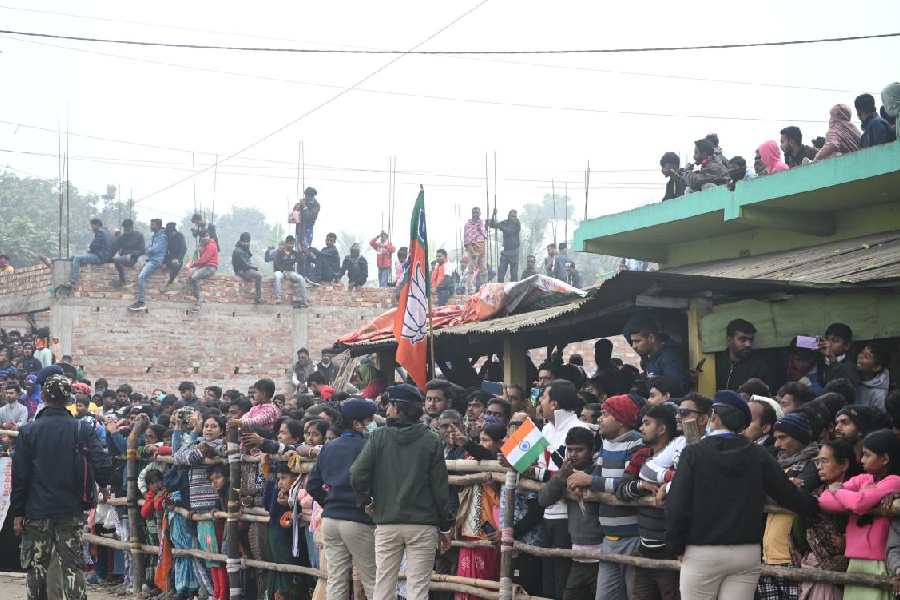 |
It was the gloomiest but most memorable Durga Puja I’ve ever experienced. Thirty-five-years ago my grandfather died on Saptami, which was also his birthday.
Because of thakurda’s passing I was robbed of all the shine and fun of that year’s Puja. In a Bhatchajj-Brahmin family like ours it was a given that normal life would be suspended at a death in the family. Therefore, we were barred from entering the Puja pandal or wearing new clothes.
Ten days of strict vegetarianism meant being deprived of the most delicious carnivores’ delights during the five-day food fiesta. Our house was crowded with family members, distant relatives and neighbours mourning the death; they kept talking about thakurda’s ‘miraculous death’ on his birthday.
In my nine-year-old mind, however, I cursed this untimely passing that was costing me an entire Durga Puja. In a few days I did understand that, in the timing of his death, my thakurda had garnered to himself an extra level of respect. Gradually, a sense of pride filled my mind. I felt more attached to the old man and started missing him.
It’s an incredible experience to see how a grand religious carnival like Durga Puja builds up every year around an inanimate statue. Faith definitely plays an important role here but I believe there is more to it. To me the statue is also the freeze-frame that captures the final moment of a long battle between two warriors.
What fascinates me is the choice of that defining moment and its transformation into a clay sculpture. It evokes the imagination. It reminds one of a narrative that is vintage and grand but, somehow, not dated. It’s possible that my film-making practice and my growing understanding of the relationship between narrative and image is what has produced this idea.
 |
In contrast, life was much simpler during childhood, when I didn’t have too many intellectual gears to complicate things. But even then I had a slightly different angle; while everyone concentrated on the Mother Goddess, I was obsessed with Mahishasur, the demon dying at her feet. I was hooked by the attitude of this unrelenting combatant who didn’t fear death. Upon command, I would mimic the asura’s pose to the great amusement of my aunts and uncles; at the time I imagined they were amazed at how much I looked like an asura. I now realise it was my scrawny body going into muscular poses that set them off.
I found an asura-avatar in my para. His name was Narayan and he was 4ft-3in tall, with a carved out, muscular physique. Narayan was known for his dhunuchi naach, a dance in adulation of Durga. The short man always danced posing as the asura, but never as a submissive bhakta of the Goddess, as was the common practice.
Narayan would dance on only one day during the Puja. The preparation took a long time, mainly to set up the dhunuchis, the y-shaped earthen incense-pots that look like big wine glasses. Once the white fumes started coming out from the pots, Narayan entered the dancing ground and stood under the spotlight, bare-bodied, wearing a dhoti tied up tight like a pair of shorts. People greeted him with roaring cheers. With the dhak beats, the performance began.
 |
A single man created a live enactment of an action-filled war story and he kept you gripped for one-and-a-half hours. Narayan would start dancing empty-handed and then pick up a dhunuchi. He would raise it, pointing to the idol, and then start swinging it, synchronising the swinging with his dance.
Gradually, the dhak gained pace and so did Narayan’s movements. Now the man started making serpentine movements and picked up another dhunuchi — a weapon to fight his enemy. Then, suddenly, he would bend completely back, almost like an arched bow.
A volunteer would run up and hand over two more dhunuchis brimming with smoke.
Wrapped in the spiralling vapour, the demon continued to fight the battle. The drums would beat madly. Two more dhunuchis, the last weapons from his arsenal would be added. Holding two of them in each hand and one in between his teeth, obscured by the whirlpool of smoke, Narayan fought the last part of the battle in a desperate
frenzy. Every performance has an ending and so does a war; the all-powerful Durga has hit the final blow, the demon had to die now. Having fought his epic battle, Narayan would finally kneel down in submission.
I am no longer a skinny kid. My secret desire to develop a ‘solid body’ like Narayan’s doesn’t haunt me anymore. But, somehow, my asura-obsession has stayed with me. Though I’ve stopped frequenting the pandals, whenever I see a Durga idol I still stop only to check on the asura.
Last year, I found myself shooting a film at a prominent Durga Puja in south Calcutta. A German artist had been commissioned. The facade the artist had designed appeared a bit too abstract to the Puja organisers. After some hesitation, they agreed to the design but, once the pandal started taking shape, the organisers began to panic.
They had never seen such a flat, unornamented pandal facade in their lives. To them it looked like a completely absurd, weird erection and they were clearly worried about how the crowds would receive this. One day, reaching the last point of his fraying nerves, one of the key organisers snapped at me, “I don’t give a damn about this pandal and neither will the visitors! People come here to see the pratima! It is ‘Ma’ who will draw all your attention once she is placed and fully decorated.”
 |
While shooting the different stages of the pratima being made I failed to notice anything special in it apart from its height, which was a full 16-ft. And as usual, to me, even the unfinished asura looked quite attractive. So while the
organiser friend was going on about the Durga’s adornments, I was waiting for the weapons to be put into the bad guy’s hands.
On Panchami, the idols were moved from the trucks and placed on the platform — an operation that involved 50 coolies and took four hours. The Durga still looked quite ordinary to me.
Next day, arriving at the pandal, the first thing I did was to go in to take a look at my asura. He looked great, the perfect macho-underdog taking on the 16-ft tall, lady-almighty.
Filled with satisfaction, I glanced up to examine the Durga. Reaching her face, I found myself transfixed. I was completely taken over by her beautiful posture, her sharp nose, her unnaturally big eyes in the angry stare. Everything seemed to be aimed at me and I couldn’t move away. I came back to my senses when I felt a touch. It was the organiser’s hand on my shoulder. “I hope you now understand what I meant.”
Without a word I rushed out looking for my cameraperson.
Nilanjan Bhattacharya is an award-winning filmmaker and writer based in Calcutta. He can be reached at bnilanz@gmail.com











